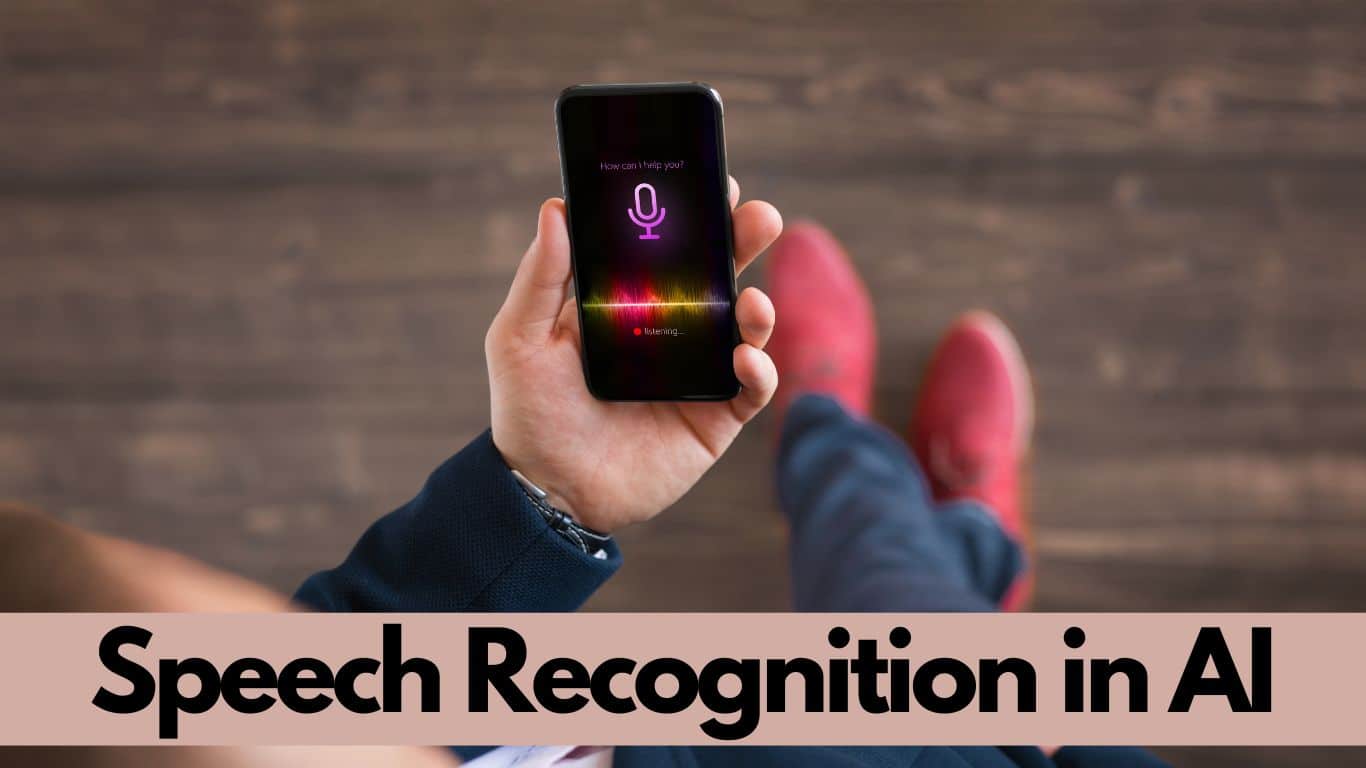Speech Recognition in AI is a Software-based speech recognition powered by artificial intelligence (AI) that is made possible by state-of-the-art approaches like machine learning (ML) and natural language processing (NLP). Human language processing is another name for NLP, an AI system that studies real-world human speech.
The vocal data is first converted into a digital format so that computer software can process it. The digitized data is subsequently processed further utilizing NLP, ML, and deep learning methods. This digital speech can be used in consumer goods like smartphones, smart homes, and other voice-activated technologies.
Read Also: Artificial Intelligence in Healthcare
Speech Recognition in AI: What Is It?
Speech recognition in AI is the process of converting spoken language into written language. Today, voice recognition software is widely used. Today, voice recognition software is widely used. However, it is frequently mixed up with speech recognition. Voice recognition technology is being utilized to comprehend and process human speech since it has advanced consistently over time. Significant advancements in voice recognition systems have been made recently thanks to deep learning and big data innovations.
Speech Recognition in AI – How does it work?
Speech recognition systems are used by computer algorithms to process and transform spoken words into text. To turn the audio that a microphone records into text that both computers and people can understand, a piece of software performs these four processes:
- review the audio
- Divide it into parts
- Digitize it to make a computer-readable copy of it, and
An algorithm should be used to determine which text representation is most suited. Voice recognition algorithms must adapt since human speech is highly contextualized and variable. The software algorithms that organize and transform audio into text are trained using a variety of speech patterns, speaking styles, languages, dialects, accents, and phrasings.
To meet these requirements, speech recognition systems use one of two types of models:
Excellent modeling: These show how speech linguistics and audio signals are related.
language structures: To find words with comparable sounds, word sequences and sounds are matched in this instance.
Read Also: Robotics: The Future of Education?
Examples of Speech Recognition in AI
Digital assistants with voice recognition: These consist of tools found on computers, smartphones, and tablets like Cortana, Alexa, and Siri. For commands and replies, these voice-activated gadgets search a variety of databases and digital sources.
Speech Recognition Solutions In Banking: Voice recognition gives information on account balances, transactions, and payments as well as helps banking customers with their inquiries. It can increase customer happiness and loyalty.
Voice Recognition In Medical: Healthcare frequently asks for quick decisions and actions. Verbal instructions allow for more efficient verbal delivery of healthcare, freeing up the hands of medical workers. There is less documentation needed. Health records are easily accessible.
What difficulties does Speech Recognition in AI face?
Despite all of the benefits and uses of voice recognition, the complicated nature of the software creates a number of challenges.
Lack of speech standards: Speech recognition is made more challenging by the fact that every person speaks differently depending on their geography, age, gender, and native tongue due to the lack of speech standards. This can cause recognition issues for French and African American speakers who may need to become used to the standard form of English.
The different contexts in which speech is used: The environment in which speech recognition is used can have an impact on its accuracy. For instance, reading aloud in spontaneous speech is frequently more accurate than voice recognition AI.
Different accents and pronunciations of words: Different accents and word pronunciations can have an impact on Speech Recognition in AI technology, making it harder to understand what is being said, changing sound patterns, and decreasing accuracy rates for particular users.
Conclusion
The use of speech recognition technology AI is growing. Users can connect with computers in a variety of ways without typing a lot. The simplicity and speed of spoken communication enabled by this technology is embraced by a variety of communications-based business applications. Speech Recognition in AI software has advanced significantly during the past 60 years of research. Nevertheless, they are still improving, largely because of AI.
